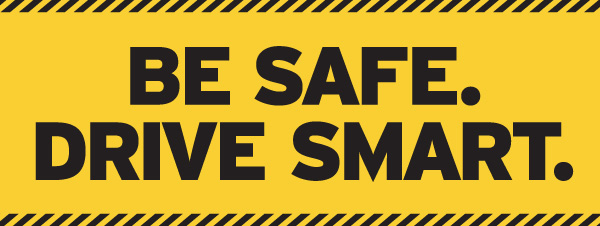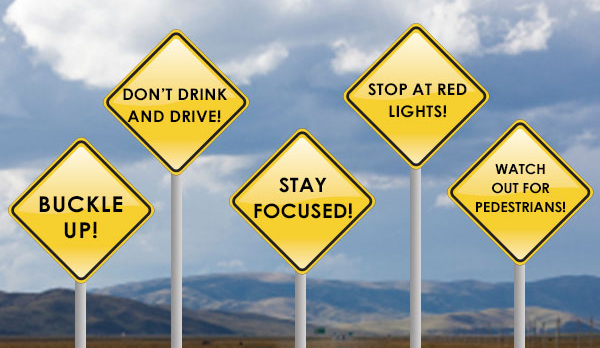Introduction
The sense of excitement when teenagers first have their driving license can often mask the real dangers of hitting the open road. Road traffic accident is a recognized dominant cause of injury and death among teenagers worldwide and in Malaysia.
Motor vehicle accidents are the leading cause of death for teenagers in the United States, with 6 deaths per day1.The truth is that, drivers between the age of 16 and 19 are three times more likely to be involved in a fatal crash as compared to drivers over the age of 201.

A Malaysian national study in 1996, reported that most of the road injuries occurred among 10-19 years (31.0%), followed by 20-29 years of age. Death were more common among the young adults, followed by adolescent (Epidemiology of Injuries 1997). In the year 2000, adolescent between 16-20 years were the majority (16.37%) of those who were involved in road traffic accidents. This was followed by those between 21-25 years (15.43%) (Royal Malaysian Police 2004).
Why teenagers are prone to accidents?
- Inexperienced drivers
- Teen drivers lack practices and make errors and wrong judgement commonly.
- Distractions
- Often occurs when drivers divert their attention from the driving task to focus on some other activities such as using the mobile phones for texting, eating and drinking, applying make-up, looking for things in the car, talking to other passengers in the car, or adjusting the radio.
- Road hazards
- Some hazards are dangerous, like sharp curves, flood zones, work zones and dead ends. Most of these are easy to identify and there’s usually a lot of time to adjust if driving within the speed limit allowed and if you are experienced particularly in the necessary driving skills and capabilities.
- Speeding
- Speeding and road racing are not only a danger to the driver but also to other road users too, especially when the visibility is poor such as at night.
- Safety Seat belts
- Teenage driver and front seat passengers are less likely to use seat belts as compared with older drivers. The reasons given for not using the seat belts by teens were driving short distances, forgetfulness, seat belts are uncomfortable, driving in a non busy area, were in a hurry5.
- Night driving
- At night, the surroundings look different and the visibility is reduced. Generally people are also more tired and sleepy, which makes accident more likely.
- Intoxication
- Drugs and alcohol impair driving. Some of the over the counter medicines can also cause drowsiness and can be dangerous while driving
Guide to obtaining a motor vehicle licence
In Malaysia, a licence can be applied through the Road Transport Department of Malaysia (JabatanPengangkutanJalan, JPJ). A person has to be at least 16 years old to obtain a licence for motorcycle and at least 17 years old for a car. He or she should have a good vision to drive. Those with special needs (Orang Kurang Upaya or OKU) can also apply for a licence, although they need further medical examination and may require some modifications for their vehicle. All new drivers should take a driver’s education course. These courses can reduce risk for crashes. There are many registered driving schools to choose from depending on where you are.Further information regarding the requirement and procedures can be obtained through http://www.jpj.gov.my.
Tips to safe driving:
- No alcohol and drugs
- No speeding or rushing
- No road race
- No extra passengers especially teenagers. New drivers should wait until they are competent, at least 3-6 months, before taking friends as passengers
- Avoid distraction while driving for example text messaging. If you need to use the phone in emergency situations, find a suitable place to stop and use the phone.
- Make sure that the vehicle is in good condition
- Always wear seatbelts.
- If possible drive cars with safety features like air bags, padded dashes, safety glass, collapsible steering columns, and anti-lock brakes.
- Drive by the rules
- Preferably avoid driving at night and during bad weather
- If you need help in case of emergency, please call for help
How parents can help
Parent’s involvement does not end when their children get their license. Parents can have a positive impact by serving as a role model as children often mimic their parents’ behaviors. Hence it is important that parents themselves practice good driving habits and practices. Parents should discuss safe driving practices early and often with their children.
Parents can help by:
-
-
- Determine when their children are ready to get a driving license and in what vehicle they can drive.
- Coaching the teenagers, be with them when they are driving especially in the first few months
- Practice on the driving skills with the teenagers
- Set a good example on the road
- Invest in some monitoring technologyto monitor their children’s driving like App based monitoring systems, integrated monitoring systems or in-car external monitoring systems4.
-
What are the School’s roles?
Schools have a role to play by emphasizing the importance on road safety, like usage of seat belts, proper driving practices particularly to the late adolescent as they will be active road users very soon.

References:
- https://www.cdc.gov/features/teendrivers/index.html”>https://www.cdc.gov/features/teendrivers/index.html
- http://www.jpj.gov.my”>http://www.jpj.gov.my
- http://www.nsc.org”>http://www.nsc.org
- http://driveithome.org”>http://driveithome.org
- ABDUL RAHMAN H., MOHD ZULKIFLI NA., SUBRAMANIAM K., LAW TH. Car Occupants Accidents and Injuries among Adolescents in a State in Malaysia. Proceedings of the Eastern Asia Society for Transportation Studies, Vol. 5, pp. 1867 – 1874, 2005.
- Ministry of Health Malaysia 1997. Epidemiology of Injury in Malaysia
| Last Reviewed | : | 06 September 2017 |
| Writer | : | Dr. Zienna Zufida Bt. Zainol Rashid |
| Accreditor | : | Datin Zil Falillah Bt. Hj. Mohd Said |







